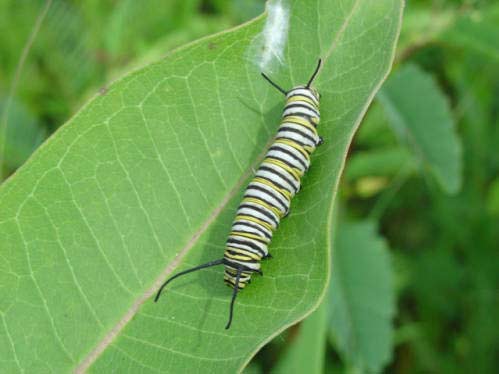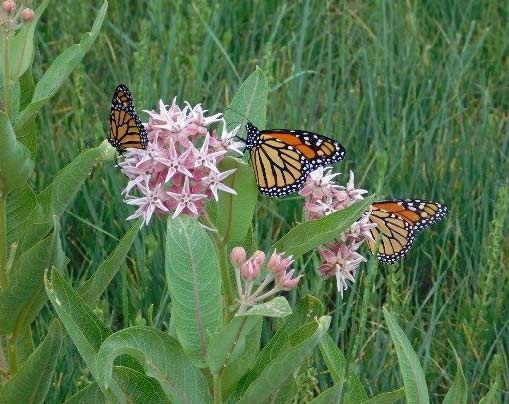Learn more about butterflies at our Butterfly Website
The North American monarch population has declined by 90 percent over the past two decades. At its high in the winter of 1996-1997, there were a billion monarchs. Today, there are only about 35 million.
Monarchs are finicky about the temperature and their specific food source. These narrow requirements make them especially vulnerable to climate change, loss of habitat, and weather fluctuations.
The key to saving the monarch, is the milkweed plant. Milkweed is the only food plant that the monarch caterpillar can eat. The chemicals in milkweed also protect the monarch by making the adult butterfly toxic and bitter-tasting to many predators.
Unfortunately, milkweed plants are disappearing all across the US due to urbanization and the use of herbicides. We can help to reverse the monarch population decline by planting milkweed in our gardens.

Milkweed (a.k.a. butterfly weed, Asclepias tuberosa) is one of the most striking of all wildflowers. The brilliant orange flowers of the Butterflyweed appear in mid-summer and are a real magnet for butterflies. Reaching up to three feet tall, this is one of the last plants to come up in the spring as it requires warm soil conditions before it will grow. It grows well on medium to very dry soils and prefers full sun.
You can find dozens of butterfly items by visiting our Butterfly Shop. Happy planting and enjoy the monarchs that will visit your yard!
Xerces Society Mid-Atlantic Monarch Nectar Plant List
<Back to Gardening Guide